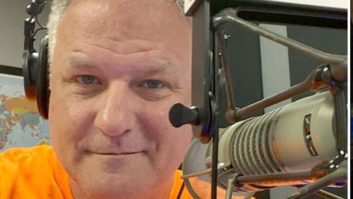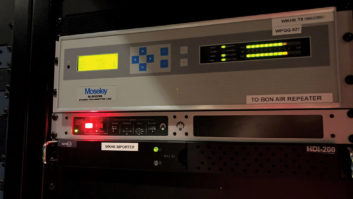Jim Boyle says, “It’s incumbent on radio to disprove the bear case.”
That’s a Wall Streeter’s way of saying our industry has been beaten up in the financial headlines this year, but it still has a lot in its favor.
Boyle is managing director of Wachovia Capital Markets. You and I might not talk to folks like Jim Boyle much, focusing as we do on the technology and engineering issues of radio. I recently read a report he co-authored called “Radio: Cutting Clutter Will Work – Bright Lights Coming” and called him to pick his brain a bit.
Cut the excess
The report is interesting to me not only because I care about the health of radio, but also because it marks a new trend: financial analysis of radio groups based on third-party monitored program material.
We’ve reported on these technologies in recent issues. In this case, Wachovia used data collected by RCS Inc. to try to find out just how heavy spot loads are among major groups.
It’s a great example of how this new kind of data can be put to work. Now that outsiders have begun tracking inventory in a detailed way, advertisers and investors no longer have to take the word of radio groups about what spots played and when. They can analyze actual inventory loads.
“There’s no place to hide,” Boyle said. “With third-party databases (informing) investors, you can’t sit there and say you’re doing 12 (spots per hour) if you’re doing 14. The investment community is starting to become more aware of the availability of the new databases. The numbers are going to be out there on this side of the fence.”
This accountability is good for radio, Boyle says, because it will confirm whether radio is keeping its promises to lighten loads. A lighter spot load will help boost rates, which is where radio needs to make its money. This fixes what Boyle sees as an imbalance in the demand/supply equation.
Radio, Boyle says, now has to put up the numbers.
“They have to prove that the business model isn’t broken, as so many investors like to say. We think it’s just cracked, and therefore can be fixed.
“One main way is to eliminate the excess inventory that stemmed from the ad rate cutting that started after the Iraq invasion and never really stopped. If 70 to 80 percent of growth has been in rates, you can’t have growth without raising rates.”
One-trick pony?
Boyle says radio’s recent revenue performance has “not exactly been historically impressive,” noting that larger groups were reporting growth in the low to mid single digits through midyear.
“In the second quarter, you had a much more lackluster number put up by the industry. (There is) concern that radio is no longer taking significant advertising share from other media. … If you don’t have that, or if they start losing share to cable, Internet or satellite, you might have that coming out of the hide of radio.
“What has happened to the share shift,” he wonders, referring to radio’s attempts to take a bigger piece of the ad pie. “Maybe that’s over. Some investors feel radio was a one-trick pony – deregulation and consolidation – and now that’s all over.”
This, however, is not Boyle’s view.
“They neglect the 70+ years of track record before that. Instead of the historic 6 to 8 percent revenue growth, investors have radio priced at about half that going forward.
“It’s incumbent on radio to disprove the bear case. We think it has a good chance of doing that, although probably not this year.”
Clear Channel’s decision to reduce loads will have a significant operational effect on radio for several months.
“You have the preparation in Q4,” Boyle said. “That won’t help (employees) pay attention to the regular business. A thousand stations have to get ready for the Jan. 1 deadline. The actual results start to hit in Q1.”
But Boyle and his colleagues at Wachovia think Clear Channel made the right call by reducing ad inventory; their report describes “a gutsy, superb long-term move.”
“Most groups agree it’s a good direction and approach,” he told me. “Some have said something pretty close to, ‘Whatever Clear Channel does, we’re going to remain competitive.’ If Clear Channel gets to that level, competitors will be forced to.”
Still powerful
So, thanks to lighter spot loads and the enforcement of this trend by third-party monitoring, Boyle remains confident in radio.
What about the recent gloomy articles in Barron’s and Forbes and other national media concerning radio?
“Besides absorbing too much propaganda from (radio’s) competitors,” he said, “what they don’t get is that everything is being used less than before. There are more options.”
He cites a presentation by RAB on radio usage.
“Surveys that show there’s only two things we do more of: use the PC, and video games. Everything else has been fragmented. But radio, out of home, has lost at a slower pace.”
(We also get less sleep and less sex, he points out.)
“I suspect Barron’s’ and Forbes’ circulation is down from a decade ago. To cast aspersions at radio as if it’s the only one is the usual print journalist approach. It ignores the big picture,” Boyle concludes.
“Radio is actually doing better in a more fragmented world, and is still very powerful to reach a mobile population making last-minute purchasing decisions.”












